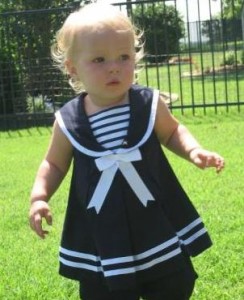
- Memorial Day
Red Rock Consulting would like to thank all veterans for their selfless contributions to our country and our freedom. Happy Memorial Day!

Red Rock Consulting would like to thank all veterans for their selfless contributions to our country and our freedom. Happy Memorial Day!
Hey all! Please check out the “About” section of this website. I just updated my resumes and put them up. Let me know if you need a resume for another project type. Happy Monday!

Dr. Jim Nevels takes samples for a pedological project.
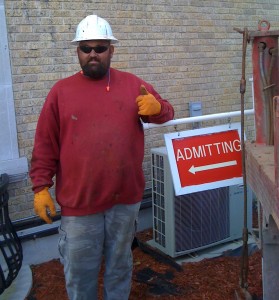
Brad Bettes (DSO) takes a break from drilling at Valley Hope in Cushing, OK

Valley Hope Treatment Facility

Hard at work in Edmond
Red Rock Consulting and DSO recently completed a project at Vance Air Force Base in Enid, Oklahoma, that had special requirements. US Army Corps of Engineers required the geotechnical team to core bedrock materials. The Corps also requested that environmental precautions be taken because the project site was located within the base’s trichloroethylene (TCE) plume.
Rock coring is not a standard procedure in many parts of Oklahoma. It requires that the rock be drilled using wet rotary methods.

Wet Rotary Drilling

Core Barrel

Core Sample
In addition to coring bedrock, the auger and wet rotary soil cuttings had to be contained in a drum. Soil samples were then sent to an environmental laboratory to be tested for contamination. The lab results will determine how the drum of soil will be disposed of.
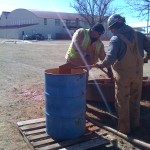
Placing Suspected Contaminated Soil into Drum
The Oklahoma Department of Transportation (ODOT) and the Texas Department of Transportation (TexDOT) keep a record of known sulfate counties in their respective states.
These are counties where sulfates have been verified through laboratory testing and/or sulfate heave has been a problem in the past. These maps of known sulfate occurrences are helpful for the government agencies and consultants who may have projects in the areas. If sulfates have been found in or near their project area, sulfate testing and/or preventative measures in design can be taken.
The sulfates counties for Oklahoma and Texas are shown below, courtesy of ODOT and TexDOT (Harris, Sebesta, Scullion, 2004).
Sulfate Counties in Oklahoma
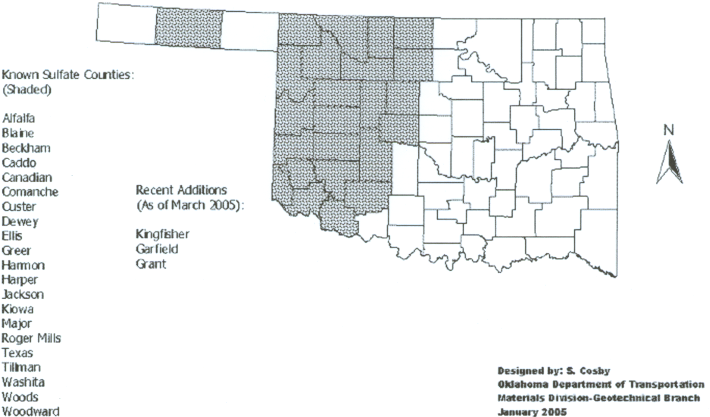
Sulfate Counties in Texas
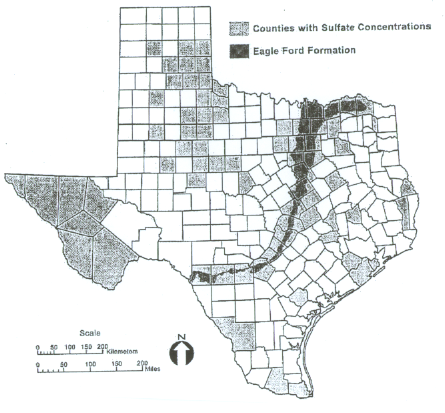
Commercial and residential projects in Oklahoma do not require on-site geotechnical engineering. Most geotechnical firms do not provide on-site engineering in their normal scopes of work and fee proposals. Because of this, many geotechnical engineers never see the site of the project they are providing recommendations for. Red Rock Consulting always recommends on-site engineering and provides it on each project unless a special exception has been agreed upon with the client for a specific project.
Geotechnical engineering recommendations are site specific for every project. Physically observing the site, the surroundings and the subsurface materials as they come out of the ground is crucial to providing the best recommendations for the project.
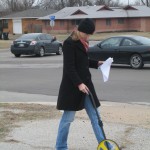
Marking Boring Locations
Geotechnical borings should be located on-site by the engineer. The geotechnical engineer is the only person who has been in contact with the client and with direct knowledge of the project objectives, constraints and concerns. In addition, the geotechnical engineer is the only person who has communicated with the utility locators.
Many sites have obstructions or other reasons why the borings cannot be located at the preferred locations. With a geotechnical engineer on site the decision is made with the proposed project in mind by an engineer familiar with the project and needs of the client.
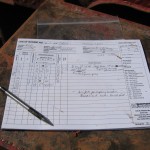
Field Logs
A geotechnical engineer on-site should always log the borings as the drilling is taking place. In this case, the drill crew is allowed to focus on the equipment and the “feel” of the subsurface conditions as the borings are advanced. The geotechnical engineer should communicate with the drill crew regarding drilling, field testing and subsurface conditions and observe and log the soil samples as they are produced.
When a geotechnical engineer logs the borings, site specific questions can be addressed more quickly. Changes in boring depth and sampling of special soil conditions, which are both discussed below, are two examples of on-site issues that may arise on a project.
Occasionally borings need to be advanced to a different depth than planned due to encountering unanticipated subsurface materials, such as deep or shallow bedrock or very soft materials, for example. With a geotechnical engineer on site, the decision to extend or terminate the boring can be made without having to return to the site, which would result in additional mobilization and soil drilling charges.
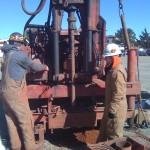
Communicating with Drillers
Oklahoma has a number of soil conditions which can be identified on site by a trained geotechnical engineer. Two examples of such soils are expansive soils and sulfate rich soils, both of which can be detrimental to construction projects if left unidentified. A geotechnical engineer, who is on the project site and observing the soil, can identify these problematic soils immediately and have them tested in order to provide proper recommendations to combat such soils.
The best geotechnical engineering reports are those written by engineers who know the project objectives and who have seen the project site first hand. The report is written specifically for the site that was observed and the soil conditions encountered. In addition, if any questions arise during design and/or construction, the geotechnical engineer can provide informed solutions as a result of the on–site experience during the geotechnical investigation.
In December 2009, Red Rock Consulting, along with DSO, braved the elements to complete a geotechnical investigation for the Wondertorium Children’s Musuem in Stillwater, Oklahoma.
The museum will be the premiere children’s museum in Oklahoma. It will be located at 10th and Duck in Stillwater and plans to open in 2010. The museum is still in the design phase, but here is a conceptual of the building and color scheme. Rees – Wondertorium
The Wondertorium project team also includes Rees Associates, Cobb Engineering and Trumble Dean.
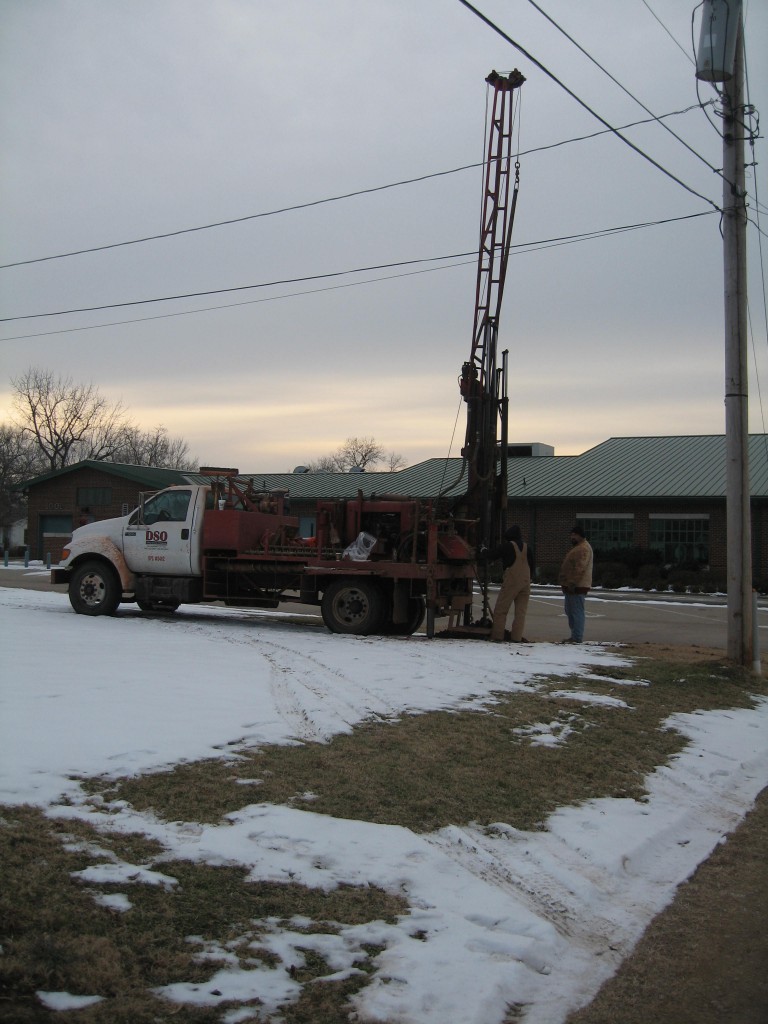
Wondertorium Children's Museum in Stillwater, OK (December 2009)
This past week I was confronted with this…
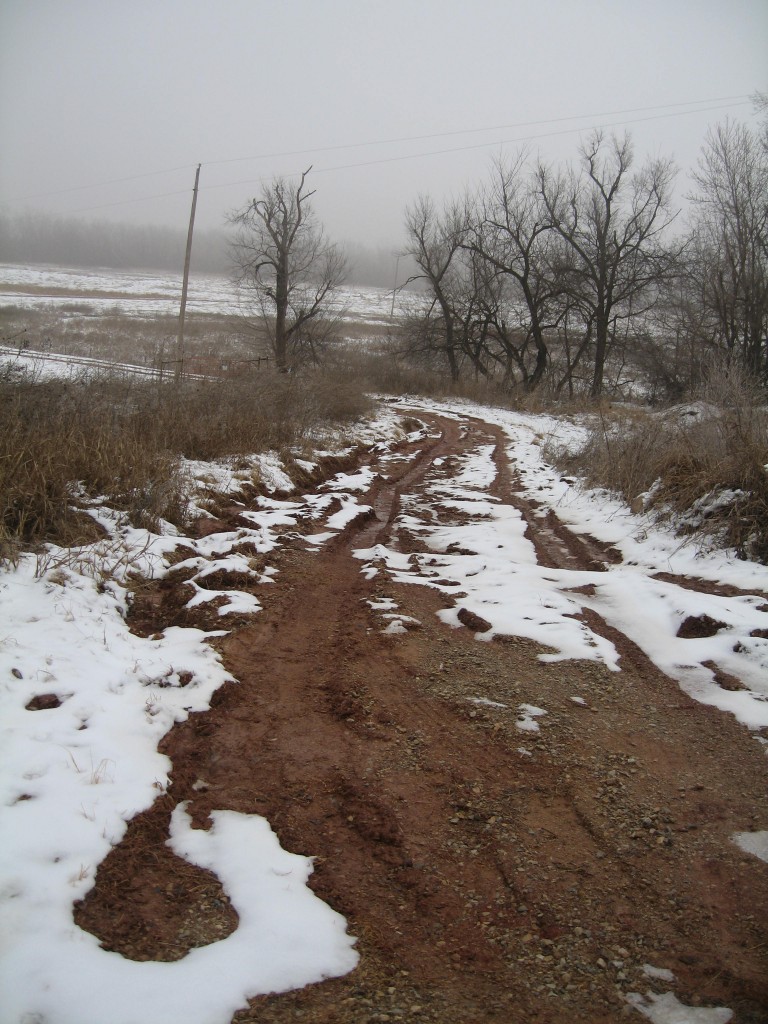
Canadian River in Newcastle, Oklahoma (February 2010)
It doesn’t look all that bad until I tell you there was approximately 1 mile of similar conditions just to get down to the project site. It would be impossible to use a traditional truck-mounted rig in this situation. Thankfully, Mohawk Drilling has an ATV rig.
With the ATV rig, we were able to access the site with no problem. It reminds me of that comedy routine where the guy says DODGE stands for ‘Dem ‘Ole Dudes Go Everywhere!
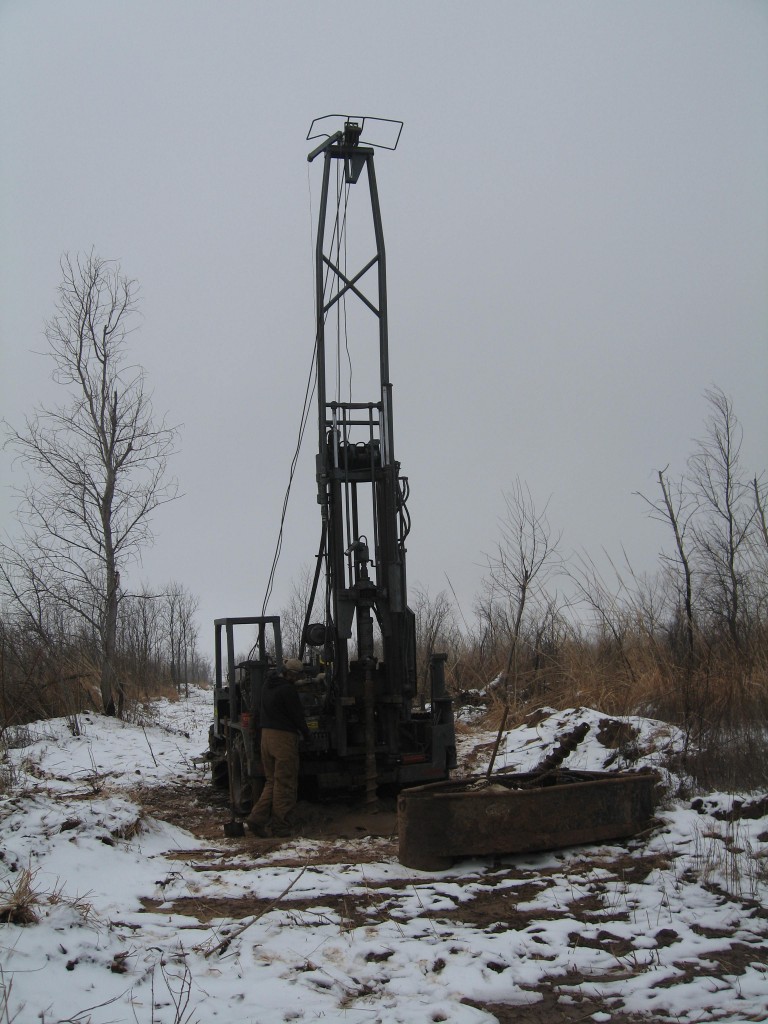
Mohawk's ATV rig goes everywhere
While an ATV rig was neccessary for this project, they are not ideal for every situation. There is a considerable additional cost for using an ATV rig. However, when it is needed, the cost is well worth it! If it doesn’t stop snowing/sleeting/raining soon, we may be seeing a lot more of these guys.
Arclite theme by digitalnature | powered by WordPress